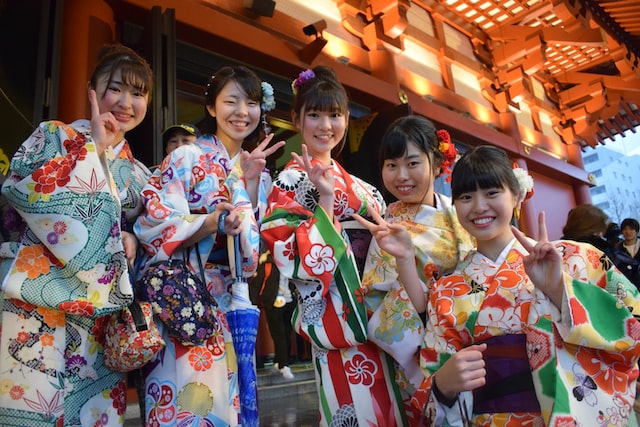
The Japanese fashion industry is a thriving and globally influential force, with its unique blend of traditional styles and avant-garde designs attracting admiration and attention from fashion aficionados around the world. Fashion has been a huge part of Japanese culture for ages.
In Tokyo, the capital city of Japan, you will find an incredibly modern and cutting-edge fashion scene, with edgy styles and bold statements leading the way. Fashionistas can explore the many boutiques, department stores, and fashion districts throughout Tokyo, soaking in the vibrant atmosphere and discovering new trends.
One of the most iconic aspects of Japanese fashion is the incorporation of traditional elements, such as the kimono. Despite being centuries old, the kimono has evolved and adapted with the times, becoming a staple of contemporary fashion in Japan. Today, you can find kimono-inspired designs in everything from casual wear to formal evening dresses, with intricate patterns and vibrant colors that leave a lasting impression.
The Harajuku district in Tokyo is particularly famous not only for its pop culture scene but also for its street fashion, with young trendsetters sporting bold and eclectic outfits that often combine modern and traditional elements. The style in Harajuku is constantly evolving, with new trends emerging regularly, making it a hot spot for spotting upcoming styles.
Another aspect that makes the Japanese fashion scene so unique is the emphasis it places on attention to detail. From the construction of garments to the fabrics used and even the way clothing is folded and presented in stores, the Japanese take great pride in refining every aspect of the fashion industry.
Japanese Fashion Trends
These are some of the most recent trends in Japanese fashion from 2020 and later:
Oversized Silhouettes – Loose, voluminous clothing has been a popular trend in Japan, with oversized jackets and wide-legged pants making a statement on the streets. It’s like a baggy, uncaring, and free style.
Streetwear-Inspired – Inspired by American street fashion, Japanese fashion has embraced bold logos and graphics on t-shirts, hoodies, and even accessories such as bags and hats. Sometimes these clothes have poorly translated English phrases.
Sustainable Fashion – In response to the global movement toward sustainability, Japanese fashion has also incorporated eco-friendly materials and production methods into designs.
Gender-Neutral Fashion – Japan is seeing a rise in gender-neutral fashion, with designers and brands creating clothing that can be worn by anyone, regardless of gender identity.
Retro-Inspired Styles – Nostalgia has been a big influence in Japanese fashion, with 90s-inspired baggy jeans, oversized jackets, and platform sneakers making a comeback on the streets.
Overall, Japanese fashion continues to evolve and surprise, with designers and consumers alike taking inspiration from a multitude of sources and making it their own.
Key Styles and Subcultures
Within the vibrant realm of Japanese fashion, various styles and subcultures have emerged, each with its own distinct aesthetic and following. From the bold and rebellious to the cute and whimsical, these subcultures showcase the diversity and creativity present within Japan’s fashion landscape.
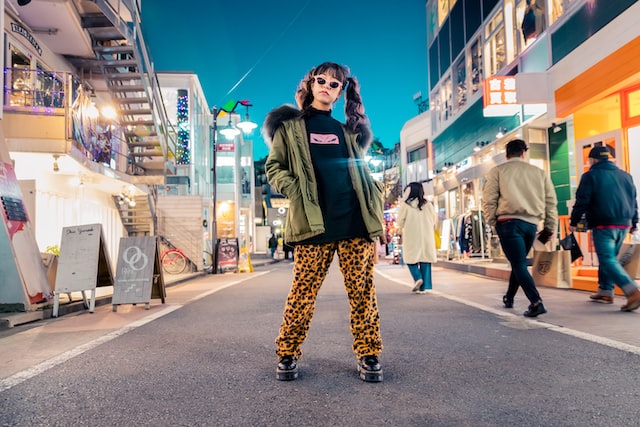
Gyaru:
Gyaru, meaning “gal,” is a subculture that emerged in the 1990s and revolves around a glamorous and over-the-top style. These fashion-forward individuals often sport heavily bleached or dyed hair, tanned skin, and extravagant makeup. Gyaru fashion embraces flashy and eye-catching clothing, such as short skirts, platform heels, and brightly colored accessories. Emphasizing confidence and self-expression, the gyaru subculture continues to evolve and influence Japanese fashion.
Lolita:
Inspired by Victorian and Rococo fashion, the Lolita subculture is characterized by its doll-like, modest aesthetic. Lolitas dress in frilly, knee-length dresses or skirts, often adorned with lace, ribbons, and bows. The style emphasizes a youthful and elegant look, with petticoats adding volume to the silhouette. Lolita fashion also encompasses various subcategories, including gothic, sweet, and classic, each with its own unique twist on the principled Lolita style.
Visual Kei:
Originating from the Japanese rock music scene, Visual Kei is a subculture that blends fashion, music, and theatricality. Visual Kei enthusiasts challenge gender norms and express their individuality through elaborate and flamboyant outfits. Influenced by punk, gothic, and glam rock styles, Visual Kei often features striking hairstyles, dramatic makeup, and bold, asymmetrical clothing. Bands like X Japan and Dir En Grey have been instrumental in popularizing this subculture both in Japan and internationally.
Decora:
Known for its playful and vibrant style, Decora is a subculture that embraces excessive accessorization and a “more is more” mentality. Participants deck themselves in colorful, kawaii (cute) attire, often layering on bold accessories like hair clips, stickers, and leg warmers. Decora fashion focuses on bright, clashing colors, and is inspired by childhood nostalgia and a desire to stand out in a crowd.
Otaku Fashion:
As a subculture deeply rooted in anime and manga fandom, Otaku fashion incorporates elements from these popular forms of Japanese media. Fans of anime and manga showcase their dedication through their clothing, adorning themselves with merchandise and clothing featuring their favorite characters. Otaku fashion ranges from casual, everyday wear inspired by popular series to cosplay, where individuals dress up as specific characters for events and conventions.
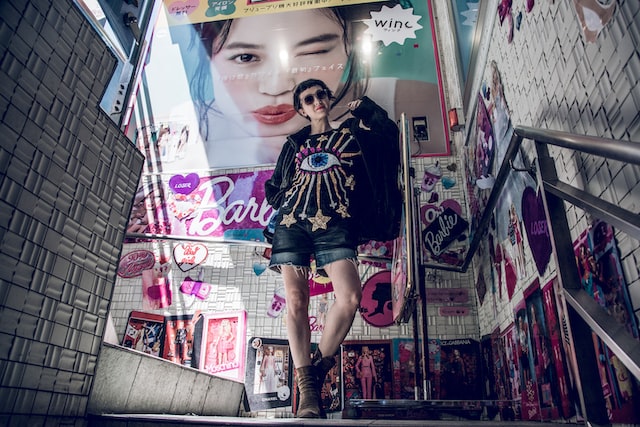
Popular Fashion Items and Accessories
The world of Japanese fashion is full of unique and eye-catching items that have become synonymous with its distinct style. From traditional garments to streetwear statement pieces, these fashion items and accessories showcase the diversity and creativity of Japanese fashion.
Kimonos and Traditional Japanese Garments:
Kimonos, the quintessential symbol of Japanese fashion, are timeless garments that have stood the test of time. With their exquisite craftsmanship and intricate designs, kimonos have been reimagined and adapted into modern fashion. Today, you can find kimono-inspired designs in everything from casual wear to formal evening dresses, captivating the world with their elegance and grace. From the flowing silk fabrics to the vibrant color combinations, kimonos embody the essence of Japanese fashion and continue to inspire designers worldwide.
Unique Streetwear and Statement Pieces:
Japanese streetwear is renowned for its bold and avant-garde designs, with statement pieces that turn heads and push the boundaries of fashion. Oversized jackets, wide-legged pants, and quirky accessories are just a few examples of the unique streetwear items that have gained popularity in Japan. The streets of Harajuku, Tokyo’s trendsetting district, are a breeding ground for unconventional fashion, where individuals express their creativity through their outfits. Whether it’s a vibrant graphic tee with a bold logo, a pair of eccentric sneakers, or an accessory that demands attention, Japanese streetwear is all about making a statement and embracing individuality.
Cosplay and Anime-Inspired Fashion:
Japan’s deep-rooted anime and manga culture have given rise to a unique form of fashion known as cosplay. Cosplay enthusiasts dress up as their favorite fictional characters, bringing them to life through detailed costumes and accessories. From meticulously crafted costumes to intricate wigs and props, cosplayers immerse themselves in the world of fantasy and inspire others to embrace their passions.
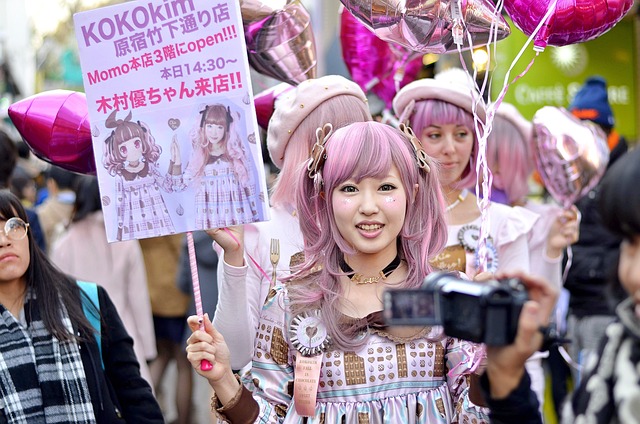
Cosplay has evolved into a global phenomenon, with conventions and events dedicated to showcasing the creativity and craftsmanship of cosplayers. Anime-inspired fashion items, such as themed t-shirts, hoodies, and accessories, have also gained popularity, allowing fans to incorporate their love for their favorite characters into their everyday style.
A Shopping Guide for Fashion Enthusiasts
If you’re a fashion enthusiast who is captivated by the unique and ever-evolving world of Japanese fashion, you’re in for a treat. From traditional garments like kimonos to avant-garde streetwear, Japan offers a plethora of fashion options that cater to diverse tastes and styles. In this shopping guide, we’ll explore some of the best places to shop for Japanese fashion, both in Japan and online, as well as must-visit neighborhoods and stores where you can find the latest trends and iconic pieces.
Tokyo: The Fashion Capital
When it comes to Japanese fashion, Tokyo is undoubtedly the mecca. The city boasts numerous fashion districts, each with its own charm and style. Some of the must-visit areas for fashion enthusiasts include:
- Harajuku: Famous for its eclectic street fashion and unique boutiques, Harajuku is a paradise for those seeking quirky, avant-garde looks. Explore Takeshita Street for an array of small shops offering diverse fashion options.
- Shibuya: Known for its bustling shopping centers and department stores, Shibuya is where you’ll find the latest trends in Japanese fashion. Don’t miss out on the iconic Shibuya 109, a multi-level shopping complex featuring numerous boutiques and trendy fashion brands.
- Ginza: A luxurious shopping district, Ginza is home to high-end fashion boutiques, flagship stores, and department stores, offering a mix of both international and Japanese designer brands. It’s the perfect place to indulge in luxury fashion experiences.
Online Platforms:
If you can’t physically visit Japan but still want to get your hands on some fabulous Japanese fashion, online platforms are a great option. Here are a few online stores that curate the best of Japanese fashion:
- Rakuten: Known as the “Amazon of Japan,” Rakuten features a wide range of fashion items, from streetwear to traditional Japanese garments. Offering international shipping, Rakuten allows you to explore and purchase unique fashion finds from the comfort of your own home.
- Zozotown: Another popular online fashion retailer, Zozotown showcases a curated selection of Japanese and international brands for men, women, and children. With its user-friendly interface and comprehensive size guide, Zozotown makes online shopping a breeze.
Traditional Japanese Garments:
No exploration of Japanese fashion would be complete without a mention of traditional garments. While traditional kimono stores can be found throughout Japan, there are a few notable locations where you can immerse yourself in the beauty of these timeless pieces:
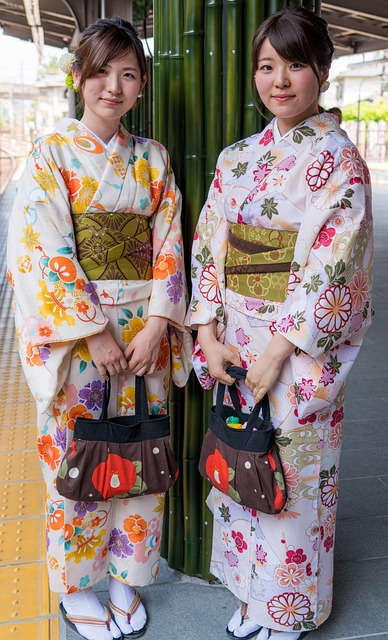
- Nishijin-ori Center (Kyoto): Located in the historic city of Kyoto, the Nishijin-ori Center offers visitors the opportunity to witness the intricate process of kimono weaving and purchase authentic, handcrafted pieces. Explore the adjacent boutique for a wide selection of kimonos showcasing various weaving techniques and designs.
- Asakusa (Tokyo): Asakusa is home to many shops specializing in yukatas, lightweight summer kimonos often worn during festivals and special occasions. Wander through Nakamise Shopping Street, adorned with shops selling yukatas in vibrant colors and patterns, along with accessories to complete your ensemble.
Japanese fashion is a vibrant and diverse world that seamlessly blends tradition and innovation. Whether you’re strolling through the streets of Tokyo, exploring online platforms, or indulging in traditional garments, there is something for every fashion enthusiast in the land of the rising sun. So go ahead, embark on your fashion journey and embrace the unique styles that Japanese fashion has to offer.

